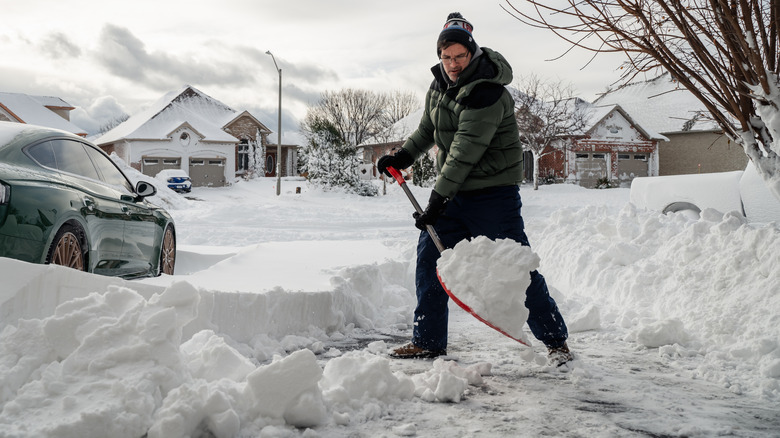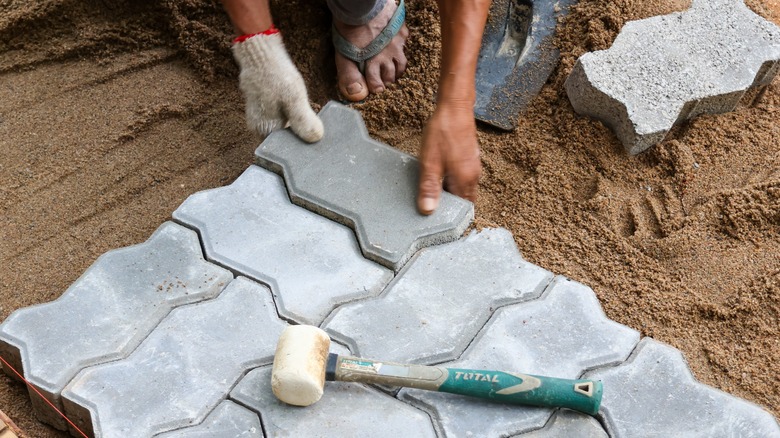Say Goodbye To Snow Shoveling With A Heated Paver Walkway
Did you know that shoveling snow is actually not recommended for people over the age of 50? Although many cities require that homeowners keep the walkways in front of their homes clear from snow, it's possible that the act of lifting many pounds of heavy and wet snow could actually cause some shovelers to go into cardiac arrest, so older people and anyone with heart conditions should consider getting rid of snow without a shovel. Avoid the health issues — and the snow pile-ups — this winter by considering handy hacks to take care of ice and snow outside without shoveling. One such hack is investing in a heated paver walkway.
Heated paver walkways work by installing electric heating mats or cables in the sand or fine gravel layer underneath the pavers. The radiant heating system can be turned on either manually or, more conveniently, automatically by sensors that are triggered when the air temperature dips below freezing and moisture is detected. That way, the heat can turn on before it starts to freeze or snow so homeowners always have a clear walkway — no work necessary. If that sounds wonderful, you might choose to completely upgrade your driveway by installing heated pavers there, too.
The benefits of heated paver walkways
There are certainly many positive reasons to opt for a heated paver walkway. If you live in a snowy climate, you'll save time and energy by not having to shovel every time it snows, relieving yourself of the physical burden and avoiding those frustrating mornings when you're late for work because you had to dig your way to your car. You'll also feel safer. If you've ever tried to walk over a layer of ice, you know how easy it is to take a tumble. Eliminating ice from your walkway prevents the risk of injury from a slip and fall for your family and any guests you invite over.
Heated paver walkways also get rid of the need for harsh ice-melting chemicals, which not only could damage your pavers over time but can be toxic for kids and pets. In addition to protecting your walkway from chemical damage, you can extend the life of your pavers by shielding the materials from constantly freezing and thawing or striking it repeatedly with a snow shovel. Perhaps best of all, when it comes time to sell your home, having a heated walkway can increase its value and may even be the selling feature that buyers can't turn down. And, since the heating elements are hidden, you don't loose any curb appeal. If anything, the clear walkway surrounded by fresh powder will boost it.

